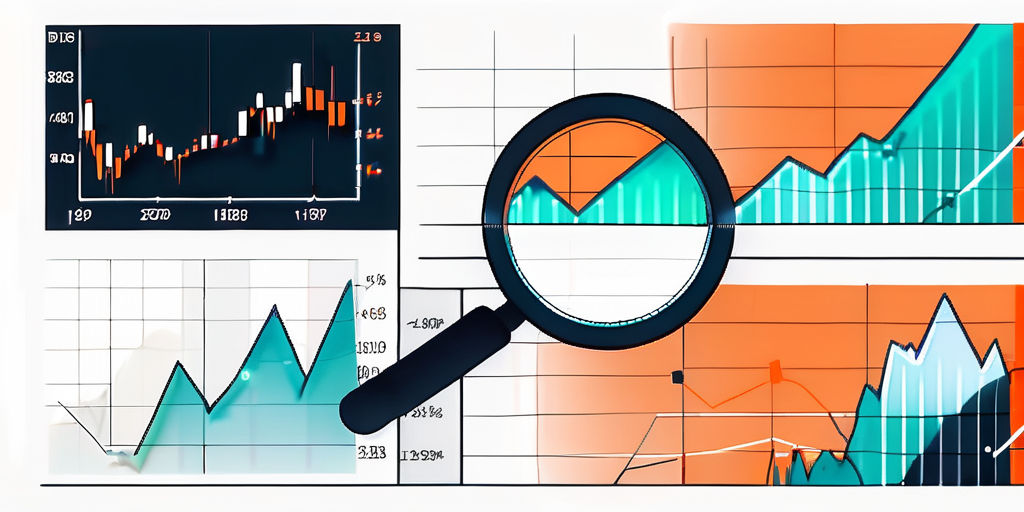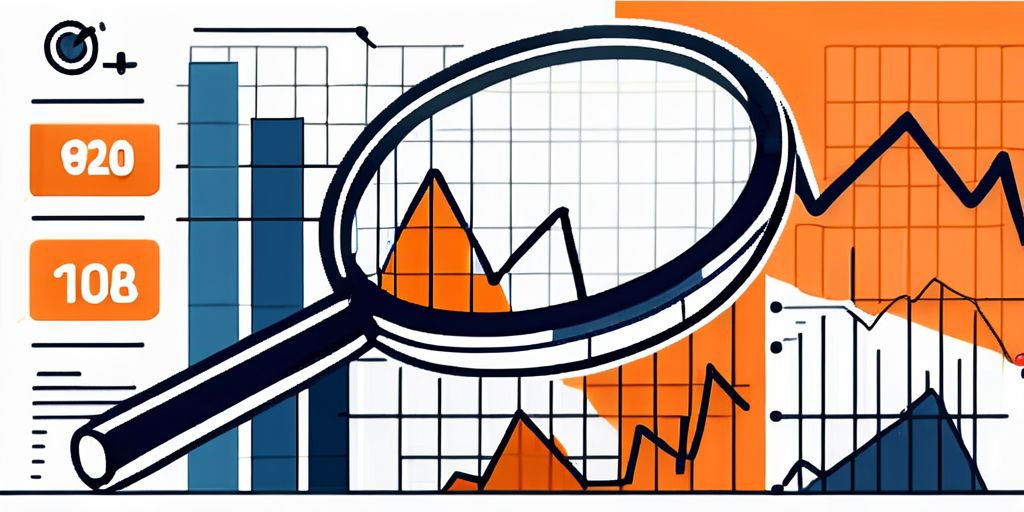What Is a PIP in Forex? Definition and How Does it Work?
In Forex, a PIP (percentage in point) is the smallest price movement in a currency exchange rate, usually the fourth decimal place for most pairs (except the Japanese yen, where it's the second decimal).
PIPs are essential for calculating profit and loss, indicating fluctuations in exchange rates.
Traders utilize PIPs to evaluate price changes, set stop-loss orders, and gauge potential gains or losses in the foreign exchange market.

What Is a PIP in Currency Trading?
In currency trading, a PIP represents the smallest incremental movement a currency pair can make. Typically, a PIP equals 0.0001 or 0.00001 for most major pairs, though values may vary.
This minute change plays a pivotal role in profit and loss calculations. For example, a shift from 1.2000 to 1.2010 reflects a 10 PIP gain, impacting trade profitability, especially with substantial volumes.
Brokers often offer fractional PIPs or "pipettes," one-tenth of a standard PIP, for precise pricing and execution.
Understanding PIPs is essential for forex traders to accurately calculate their potential profits or losses. It allows traders to set stop-loss and take-profit levels effectively based on their risk tolerance and trading strategy.
Additionally, PIPs define the profit or loss made in a trade. Each movement of a currency pair, up or down, is measured in PIPs, and the difference in PIPs determines the outcome of a trade.
For example, if you bought a currency pair at 1.2500 and sold it at 1.2505, you would have made a profit of 5 PIPs.
Conversely, if the price dropped to 1.2495, you would have experienced a loss of 5 PIPs. This simple example illustrates how PIPs directly affect the profitability of a trade.
It's important to note that PIP stands for "percentage in point" or "price interest point", and it is a standardized unit of measurement used by forex traders to quantify price movements.
Most currency pairs are quoted to four decimal places, so a PIP is typically equivalent to 0.0001. However, some exceptions exist, such as the Japanese Yen pairs, which are quoted to two decimal places, making a PIP equivalent to 0.01.
By paying attention to PIP movements, traders can make informed decisions and manage their trades more efficiently.

Calculating the Value of a PIP
Calculating the value of a PIP is a crucial skill for forex traders, as it helps them determine the potential profit or loss of a trade.
The value of a PIP depends on various factors, including the currency pair being traded, the lot size, and the exchange rate.
For most currency pairs, the value of a PIP is calculated using the following formula:
- Determine the exchange rate for the currency pair
- Multiply the exchange rate by the lot size
- Multiply the result by the PIP value (0.0001 for most currency pairs)
By following this formula, traders can accurately calculate the value of a PIP for any given trade.
The chosen lot size for a trade affects the PIP value.
A standard lot is 100,000 units, while mini and micro lots are 10,000 and 1,000 units, respectively.
Smaller lot sizes result in a lower PIP value, and larger lots have the opposite effect.
PIP Spreads and Forex Trading Costs
When engaging in forex trading, traders must be aware of PIP spreads and how they can impact their trading costs. 'PIP spread' refers to the difference between a currency pair’s buy and sell prices.
Brokers usually charge a spread as compensation for executing trades. The spread is typically measured in PIPs and can vary depending on the liquidity and volatility of the traded currency pair.
A smaller spread is generally more favorable for traders, as it reduces the overall cost of executing trades.
Market conditions and economic events influence PIP spreads. High market volatility, like major economic announcements or geopolitical events, tends to widen spreads due to reduced liquidity and increased trading risks.
Traders should exercise caution during these times, as wider spreads can result in higher trading costs and potential slippage.
Some brokers provide fixed spreads that stay constant, irrespective of market conditions. Others offer variable spreads, adjusting in real time based on market liquidity.
Traders should assess their trading strategy and risk tolerance to decide between fixed and variable spreads, considering each’s advantages and disadvantages.
How to Use PIPs in Forex Trading
A common technique involves setting profit targets and stop-loss orders using PIP values. Traders can exit a trade after achieving a desired profit by setting a predefined number of PIPs as a profit target.
Likewise, stop-loss orders can limit losses by placing them at a specific number of PIPs if the trade moves unfavorably.
Another application of PIPs is in the calculation of risk-reward ratios. By comparing the potential profit in PIPs to the potential loss in PIPs, traders can assess whether a trade is worth taking or if the potential risk outweighs the reward.
Moreover, PIPs determine position sizes in forex trading.
Traders often use PIP values to calculate the appropriate position size based on their risk tolerance and the distance to their stop-loss level. This helps traders manage their risk effectively and avoid overexposure in the market.
Understanding fractional PIPs adds precision to trading decisions. While a standard PIP is a one-digit movement in the fourth decimal place of a currency pair, fractional PIPs involve movements of half or a tenth of a PIP. This granularity is useful for refining entry and exit points in trades.

Advanced Concepts Related to PIPs
Concepts such as fractional PIPs, PIPettes, and PIP value fluctuations across different currency pairs can give traders a deeper understanding of PIP dynamics and their impact on trading strategies.
Understanding fractional PIPs is crucial for profit-maximizing traders. Fractional PIPs represent smaller price movements than the standard PIP value.
Some brokers offer platforms enabling trading with 1/10th of a PIP, providing traders with enhanced precision.
By integrating fractional PIPs into their strategies, traders can refine entries and exits for more profitable trades.
Consider using PIPettes, which represent fractions of a PIP, denoting even smaller price movements. In most currency pairs, a PIPette equals 1/10th of a PIP.
Understanding and utilizing PIPettes helps traders analyze price movements and make more informed trading decisions.
Common Mistakes to Avoid with PIPs
Like any trading aspect, traders should avoid common mistakes when dealing with PIPs. One frequent error is overlooking PIP spreads and trading costs when assessing potential profits and losses.
Ignoring these factors can result in inaccurate profit estimations and unrealistic trading expectations.
Additionally, it is crucial to use PIPs as part of a comprehensive trading strategy and not rely solely on them.
PIPs provide a valuable measurement tool, but they should be used with other technical and fundamental analysis techniques to make well-informed trading decisions.
Another critical mistake traders make with PIPs is setting unrealistic profit targets or stop-loss levels based solely on PIP values. While PIPs are vital for calculating potential gains or losses, they shouldn't be the sole factor in determining trade exit points.
It's crucial to consider market volatility, support and resistance levels, and overall market conditions when establishing profit targets and stop-loss orders.
Furthermore, traders should be cautious about overleveraging their positions based on PIP movements.
While high leverage can amplify profits, it also increases the risk of significant losses. It is essential to balance leveraging for potential gains and managing risk effectively to protect your trading capital.
Frequently Asked Questions
One pip in forex is generally equivalent to 0.0001 in most currency pairs, except for the Japanese yen, where it's 0.01.
The value of 50 pips in forex depends on the specific currency pair being traded; it's calculated based on the exchange rate and lot size.
In forex, 100 points are typically equal to 10 pips, considering the standard conversion rate of 1 pip being 0.0001.
Achieving 100 pips per day in forex involves strategic trading, including analyzing market trends, setting appropriate stop-loss and take-profit levels, and managing risk effectively.
In stock trading, the term "pip" is uncommon, primarily associated with the foreign exchange (forex) market. In forex, pips signify the smallest price movement in a currency pair. Conversely, stock trading commonly uses terms like "points" or "percentage points" to indicate price changes, reflecting the distinct terminology between markets.
Final Thoughts
A PIP (percentage in point) in Forex is the smallest price movement in a currency exchange rate, typically representing the fourth decimal place for most pairs, except the Japanese yen.
PIPs play a crucial role in calculating profits and losses, aiding traders in evaluating price changes, setting stop-loss orders, and determining potential gains or losses in the foreign exchange market.
Understanding PIPs is essential for accurate trade analysis and effective risk management.
Traders use PIP values to calculate position sizes, set profit targets and stop-loss orders, and assess risk-reward ratios. Additionally, advanced concepts like fractional PIPs and PIPettes enhance traders’ precision in refining entry and exit points.
However, it's vital for traders to avoid common mistakes, such as overlooking PIP spreads and trading costs, relying solely on PIP values for trade decisions, and overleveraging positions.
A comprehensive trading strategy, incorporating PIPs alongside technical and fundamental analysis, is essential for making well-informed and realistic trading decisions in the dynamic Forex market.




